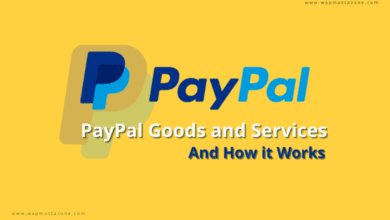
5 Ways to Minimize Early-Stage Business Risk – Entrepreneurship and risk go hand in hand. After all, entrepreneurship is about creating solutions that fill a need and no human ever has created something without testing, trial, and error. The very act of starting a business demands you assume the risk of failure in various forms: insufficient cash, lower-than-anticipated market need, fierce competition, and challenges that threaten to shift your focus.
Most entrepreneurs believe the gamble is worth the compromise if it means controlling their own destinies, setting their own schedules, and changing people’s lives. Fortunately, business owners can mitigate risk by taking smart, carefully calculated steps. Here are five simple, proven ways to minimize exposure during your startup’s early stages.
Suggested: 10 Types of Business Insurance
Related: Maximizing Your Startup’s Potential with a Premium Domain Name
Also read: Top 16 Free Business Directories
5 Ways to Minimize Early-Stage Business Risk
1. Focus on delivering value for cash:
How do you prepare for a successful business launch? If you’re like most entrepreneurs, you might lay the foundation by building a website or an app, reading a few books, and taking courses to fill in your knowledge gaps.
But here’s the truth: Right this moment, people are ready to pay you for solving their problems. Web presence, product development, and personal education are important, but you can accomplish those tasks while you serve customers.
Here’s proof, from my own experience. My first startup venture rewarded users for their eco-friendly actions. I spent eight unsuccessful months fundraising for product development. Then I switched my focus to creating value. I put my energy into doing things that don’t scale. Instead of building an application, I became the product: I helped users find the nearest recycling facility and connected them with the best local reward providers so they could redeem their points. This shift helped me build the recognition and traction I needed to raise my target amount through presales and without a product.
You can apply the same idea to service-based businesses such as coaching, consulting, course creation, and marketing. Monetize your skill quickly by conveying your value proposition to your ideal customer. To get the most bang for your hard-fought bucks, identify the ideal viable marketing channel to carry the message. Depending on your model and your market, that might be social media, email, joint ventures, or something else entirely.
Selling first allows you to delay the biggest expenses of those product-development dollars. It minimizes risk while generating revenue for investment in later stages.
Also read: The Complete difference between PayPal FnF and PayPal GnS
Related: PayPal Friends and Family and How it Works
2. Align your skills with the product or service.
Entrepreneurs are constantly tempted to explore shiny ideas with growth potential. Most of the time, those ideas require additional skills. Consider the common comparison of technical and non-technical founders. An entrepreneur with programming knowledge and skills can create a product’s early versions by investing one resource: time. Time is money, to be sure, but it’s a variable you can control. On the flip side, a non-technical founder must invest both time and money to build a technology startup. This significantly increases business risk, especially in a market where more than 90 percent of startups fail.
When you align human capital with the solution, you can test, iterate and pivot quickly without incurring expenses. The best way to launch a business that requires complementary skills is to offer it as a service. Companies such as Basecamp and MailChimp began by offering product development, design, and marketing services before introducing scalable technologies. Those initial phases allowed the two companies to gain a deep understanding of customer needs, generate revenue, and build stronger foundations for the future.
3. Keep a stream of income:
If you focus on leveraging your skills to quickly deliver value for cash, you won’t have to keep your day job for very long. In the meantime, though, think of your steady gig as your insurance. Quitting requires some planning.
First, define a target for the monthly, recurring business revenue that will provide you with enough security to dive in full-time. Multiply this number by a minimum of three months. This will help you test your model’s stability and make a more confident decision.
Some people prefer to run a business on the side. If you’re one of them, you can follow the same strategy to plan your first hire. Allocate your limited time to tasks that only you can perform or to which your personal touch adds the most value. Freelancers with different roles can help you run and grow your business as remote workers.
4. Surround yourself with mentors:
Many entrepreneurs are skeptical about mentor relationships or perhaps skittish about how to start the process. Consider this balance between upfront and lifetime expenses as a chance to evaluate opportunity costs. A good mentor can help you avoid mistakes, choose the right path and accelerate your progress toward your goals. According to MicroMentor, entrepreneurs guided by mentors see greater revenue growth (83 percent compared to 16 percent) and are more likely to survive.
The alternative of going it alone, with just your own knowledge is a viable option, but it can prove very costly in terms of time and money.
Today’s resources offer a welcome middle ground. Many communities and websites can provide guidance in best practices as well as link you to a support network that offers both interaction and education.
If you’re like most entrepreneurs, you’re endlessly curious. Put that trait to work by asking to interview a recognized voice in your field. Platforms such as Zoom, YouTube, and Facebook give you the tools you need to feature a guest inexpensively and without a need to justify the interview. Experts like to be experts. Show a genuine interest to listen, highlight their experience, and spread the influence of their knowledge. Often, your authentic attention is enough to grab theirs. Every interview is an opportunity to ask questions and connect with a new leader.
Also read: How To Make $100/day on Fiverr – Complete Guide
Also read: 7 Brilliant Ways to Make Money Online in Nigeria
5. Avoid unnecessary expenses:
You’ll find no shortage of ways to significantly increase business risk without boosting your success rate. Common pitfalls include renting unneeded office space, investing in product development or advertisement without careful validation, building a team too soon, and borrowing money.
Instead, start from home or in a coworking space. The latter could make it possible to split the cost of shared-function employees or freelancers with other business owners — in turn, minimizing overhead and helping you find volunteers. Coworking also enables you to exchange products and services or cultivate promotional partnerships with like-minded entrepreneurs.
Above all, build one thing at a time. Diversification is a smart move in finance courses, but it can be disastrous as a business-building strategy. Running many projects at the same time will hinder your performance. Even if you manage to keep ahead of expenses, you’ll end up as a jack of several trades and a master of none.





